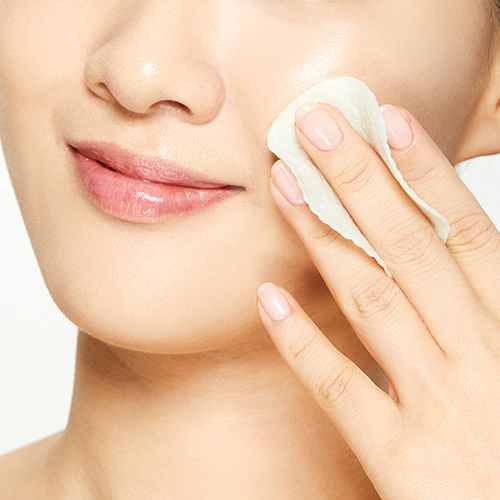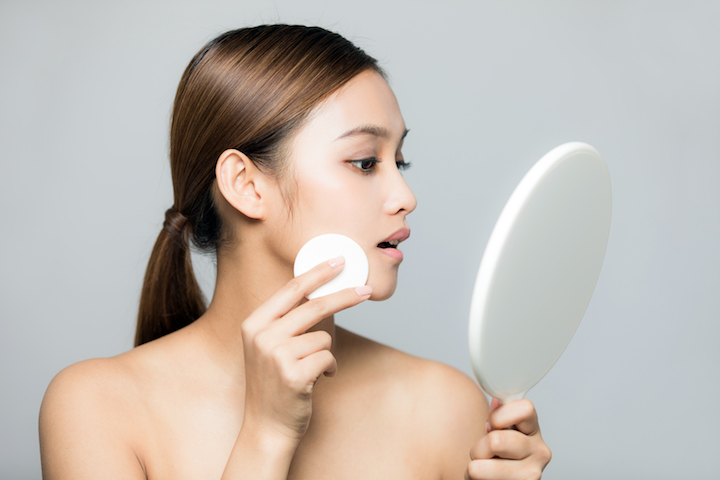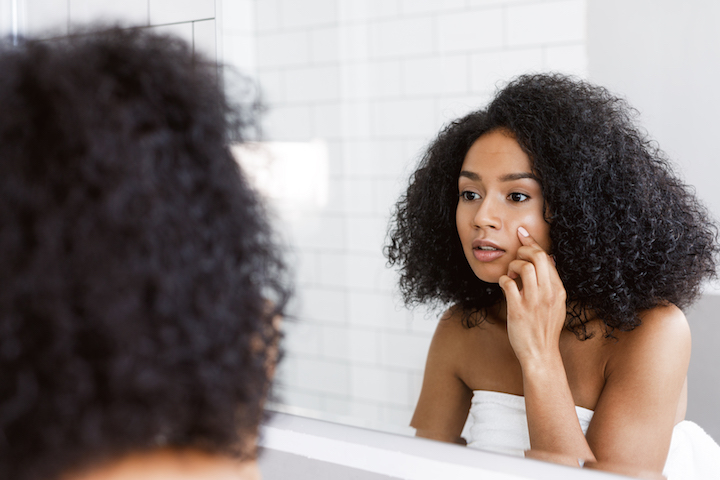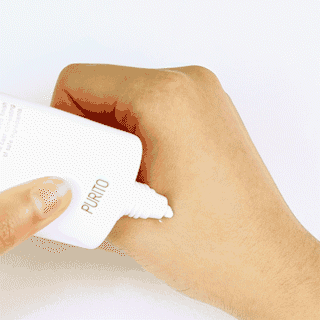Interested in skincare acid products? Or maybe you’ve tried acids before and thought, meh. Well, we’ve got the 411 on everything you need to know before giving acids a go (or a second go). Here, part 2 of 9 things you need to know about skincare acids.
And we’re back!
In the first installment of this two-part series, we covered five basic questions about acids: what they are, which ingredients are acids, how to apply acids, how to know whether an acid product will be effective, and how long it may take to see results from using acids. But those were just the beginning of our acids journey. Here are the next four common questions about chemical exfoliation.
6. At what age should I start using acid products?
This is one of the most frequently asked questions I get regarding acids. Unfortunately, there is no easy answer, no one-size-fits-all roadmap to what age to start doing X or Y.

Generally speaking, you can start using acid products at just about any age. The question is whether your skin exhibits a need for acids. I’m not a fan of starting chemical exfoliation even when your skin doesn’t seem to “need” them, as a preventative measure: If your skin is fine as is, then it’s fine as is, and what you’re already doing is working. If, on the other hand, your skin is prone to clogging or textural or pigmentation issues, then it’s fine to start acids even if you’re in your teens or early 20s. It all depends on you.
7. Which acids are right for me?
We briefly covered what AHAs and BHAs do in the first part of this series, but here I’ll break them down for you according to skin issues.
* Surface textural issues, such as roughness or fine lines: AHAs
* Dark spots and hyperpigmentation: AHAs
* Whiteheads and closed pimples or clogs: AHAs
* Oily skin with enlarged pores: BHAs
* Large clogs in open pores: BHAs
As a further consideration, AHAs are lightly hydrating, while BHAs are oil controlling. Additionally, glycolic and lactic acids are stronger than mandelic acid. Unfortunately, glycolic and lactic acids may carry a risk of additional hyperpigmentation when used on darker skin, so darker skin tones may be safer with mandelic acid products.
Betaine salicylate, meanwhile, is weaker than salicylic acid. While I and many other people find betaine salicylate effective enough for our needs, such as moderate pore issues, people with oilier skin or more pronounced pore problems may want to look into Western salicylic acid products.

8. How long should I wait in between applying my acids?
Oh, man. The wait time conundrum.
When I started learning about skincare via reddit’s r/skincareaddiction community, wait times were All. The. Rage. It was commonly recommended to wait at least 20 minutes after applying an acid product before moving on to the next, which means that if you were using an AHA and a BHA product in one routine, you should plan on at least 40 minutes of waiting.
I did it too. My evening routine took literal hours because of the wait times, especially after I tacked on vitamin C serum (another 20 minute wait time) and prescription tretinoin (you guessed it, 20 more minutes). That’s 80 minutes of wait time. For a daily routine!
I did that for years. Then, after some time, and thanks to advice from people like cosmetic chemist Stephen Ko over at Kind of Stephen, I just kind of stopped. “What will happen if I just let each chemical exfoliant dry and then move on to the next one?” I wondered. That’s what I started doing. That’s what I’ve kept doing ever since. I apply one acid, give it maybe five minutes to dry, apply the next, give it another five minutes, and then move on with my routine and my life.

Amazingly, the acids work just as well for me this way as they did back when I was sacrificing over an hour of every evening to waiting around before applying each subsequent layer. Want to know how I know they work? If I do my acids too many nights in a row, I still get over-exfoliated, just like I would during the Era of Long-Ass Wait Times.
And speaking of over-exfoliation …
9. What should I watch out for when using acids?
Over-exfoliation
Over-exfoliation is the biggest problem to watch out for when you’re doing chemical exfoliation.
As we know, chemical exfoliants like AHAs and BHAs work by ungluing dead skin cells from your face. They remove them from the uppermost layer of skin, the stratum corneum (aka the horny layer, heehee), which is a brick and mortar structure in which the flattened dead skin cells are the bricks and our skin’s naturally occurring lipids are the mortar.
Removing some dead skin cells from the horny layer reveals fresher, brighter, and smoother skin. Removing too many dead skin cells, on the other hand, leaves the horny layer thin and weak. It’s unable to hold moisture in skin or to keep irritants out.
I talk in more detail about over-exfoliation in this old blog post. For now, I’ll keep it to the basics. You can generally recognize over-exfoliation by looking for a few key signs:
* A thin, tight, “glassy” appearance to skin
* Rough, flaky texture (the opposite of what you want from chemical exfoliation!)
* Increased sensitivity — are your normal products now stinging your face when you apply them? Is your face turning red when you touch it?
* Increased breakouts
* Increased redness or blotchiness
* Increased oiliness as the lipids in the horny layer begin to leak out of their healthy structure
* Unusually dehydrated or constantly dry and tight feeling

You may have just a few or many of these signs. Once you get used to chemical exfoliation and what a healthy result looks like versus an unhealthy result, you’ll be able to recognize the problem quickly and do what you need to do to fix it. If you do find your skin getting over-exfoliated, discontinue use of your acids for a while, follow the advice Beautytap writer and OG K-beauty blogger Sheryll Donerson gives in this article, and only slowly reintroduce your acids, using them less frequently than you were before.
Purging
Something else to look for as you begin using acids is purging. Purging happens when forcefully renewing skin (using acids or retinoids) pushes deep clogs to the surface, where they purge out in whiteheads that appear suddenly but disappear quickly. Purging is a good thing, since it means your skin is puking up clogs that would otherwise continue to cause problems.
Purging isn’t the only reason breakouts may happen while you’re using acids, however. Sometimes a breakout is just a breakout and means you should discontinue the product you’re using. You can learn more about how to tell the difference by reading our article on purging.
Photosensitivity
Finally, when you’re using AHAs, make sure you’re also using sunscreen every day. AHAs surface newer skin. That newer skin is far more sensitive to UV damage. Don’t undo your hard work by allowing your fresh new skin cells to burn in the sun. And don’t think that sunscreen is only necessary the morning after acids. Skin remains photosensitive for seven days after AHA use, so continue using sunscreen every day, even if you didn’t use any acids the night before.

(But you’re already using sunscreen every day, right?)
And that’s it! I hope this acids primer has helped you figure out which acids you need and how to use them. AHAs and BHAs can be godsends for all kinds of skin problems, as long as you choose yours wisely and use them with care. If you feel ready to start incorporating acids into your routine, check out my primer on prepping your skin for acids.
What are your favorite chemical exfoliants? Let us know in the comments!
Loading...